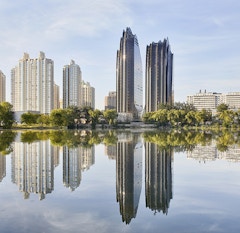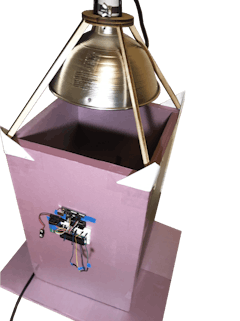
Vintage Vinyl
Mid-century through 1980’s buildings with lock-strip or “zipper-gasket” glazing systems are an ever present part of the urban landscape in many

Mid-century through 1980’s buildings with lock-strip or “zipper-gasket” glazing systems are an ever present part of the urban landscape in many

The testing of aluminum/glass curtainwalls for seismic capability, mainly inter-story drift, has been carried out on many curtainwalls over the last

This month, our content is focused on how buildings impact people and their well-being. How does their shape, look, and design impact how we function? How are our daily lives, our culture, and our society influenced by the built environment around us?

Shanshui City and Star Bund Center can be considered as representative projects of RFR Shanghai recently Both provide creative solutions for complex

Environmental and socio-economic benefits of sustainable preservation have become apparent most recently in the restoration of the historic former


Tokyo’s prestigious Ginza District, is home to innovative architectural design. One of the most recent examples is Ginza Six (GSIX), the largest

The focus of this issue of SKINS is on embodied carbon -- the carbon dioxide (CO₂) emissions associated with materials and construction processes throughout the whole lifecycle of a building or infrastructure.

FTI touched down in Minneapolis to confront themes central to the ever-evolving facade: energy-efficiency and sustainability, digital technology, kinetic and dynamic components, and material evolution.

The European building stock is mainly constituted by highly energy demanding buildings. The only way to a more sustainable and decarbonized building

Our upcoming FTI Student Forum explores the intersection of Facades, Carbon, and Circularity. In a fast paced spitfire format, architecture students present their recent work and research.

Case study of the recently opened John A. Paulson Center for New York University in Manhattan reviews design solutions of façade depth and scale to

The global increase in atmospheric temperature rise combined with the rapid growth of previously underdeveloped climate zones presents a growing need


A question for architects and building industry: Can our cities be part of the solution to the challenges facing humanity, or are they intrinsically and inevitably a big part of the problem? To move beyond the latter demands nothing less than a fundamental shift in the way we think about buildings.

Kintsukuroi, the Japanese art of repairing broken pottery with powdered precious metal, is a practice of celebrating the life and history of an

Dynamic architectural lighting in urban areas is a key element in creating attractive nighttime icons in addition to potentially generating

The wonder of nature is the abundance of unique forms she creates based on a few simple physical principles or laws. No two snowflakes are alike.

St. Patrick’s Cathedral’s Lady Chapel glass wall and the Trinity Church glazed canopy demonstrate that structural glass can be a great solution to improve the functionality of a historic building without competing with its original fabric.